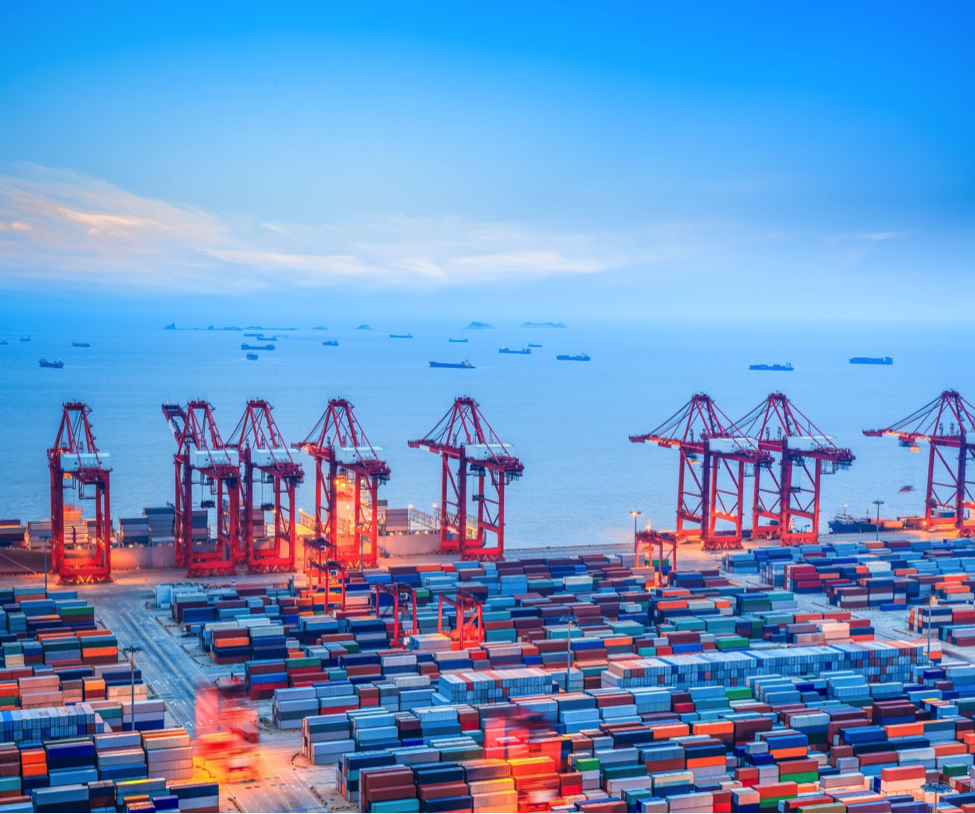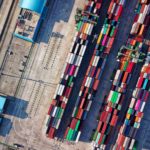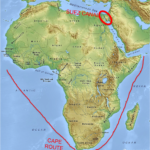2022 Supply Chain Outlook for U.S. Shippers
We may have seen a full shift in U.S. import patterns for 2022, particularly with an increase in cargo volumes through East Coast ports.
Bill Mongelluzzo reports in the Journal of Commerce:
Import volumes in the first half of 2022 are expected to stabilize to the West Coast but continue growing to the East Coast, according to the weekly Sunday Spotlight newsletter from Sea-Intelligence Maritime Analysis.
Not Only for the First Half of 2022
I see the potential for West Coast shipping volumes to level out and East Coast volumes to attract what would normally be West Coast cargo movement through the second half of 2022 as well.

Port congestion has been a major problem for well over a year, but it has been especially bad at West Coast ports, with the Ports of Los Angeles and Long Beach serving as the poster children for supply chain bottlenecks. Naturally, this would lead to diverting some imports to East Coast ports (as has been happening for months). But that’s not the only thing that could impact 2022 shipping behavior for U.S. importers and exporters.
Since August of last year, I’ve put warnings in this blog to shippers that there could be disruptive contract negotiations at West Coast Ports this year. In fact, that’s likely. The International Longshore & Warehouse Union (ILWU) master contract expires this year, and talks for a new one are expected to get contentious over the issue of automation.
Avoiding ILWU Congestion Makes Second Half of 2022 East Coast Cargo Shift Likely
One of the top ways shippers can protect their supply chains from likely ILWU strife-driven port congestion is to explore shipping through East Coast ports. For that reason, a continued trend through the end of the year of exceptionally strong East Coast performance and leveling off West Coast volume, as is expected for the first half of 2022, is likely. If things look like they’re getting really bad between the ILWU and Pacific Maritime Association (PMA), West Coast ports could see a real dip in volume while East Coast ports reap the benefits.
Inflation Could Impact Volume
It should be noted that it’s not at all improbable that overall import volume to the U.S. could be negatively impacted by the likely event that inflation continues to soar through 2022. Obviously, that would impact cargo volume at West, East, and Gulf Coast ports.
For a year and a half, shipping demand soared unnaturally because of government policies in the U.S. of lockdowns, COVID restrictions, and stimulus packages. This soaring demand obviously played a large role in the port congestion and supply chain bottlenecks and disruptions the U.S. has been struggling with. Those policy decisions, especially the trillions upon trillions in government spending (and money-printing spree that came with it) are also enormous factors in why we’re experiencing higher inflation than has been seen in 40 years.
There’s no reason to believe those currently in power in Washington will be able to fix the inflation problem anytime soon. Especially when it’s their policies that have been making inflation worse. Established spending patterns can prop up shipping demand, but it’s hard to believe inflation won’t eventually hurt overall shipping volume. If inflation is reigned in over the course of 2022, there could be a dramatic shift in shipping demand on the way.
Despite Misleading Improvement, Port Congestion Still a Massive Problem at West Coast Ports
Even with soaring inflation, we’re a long way from seeing real congestion relief at the ports. Thanks to the Chinese New Year that came this year on February 1st, we did see a significant drop in the number of ships waiting to dock at the Ports of Los Angeles and Long Beach. During the Lunar New Year celebrations in China, factories close down for a couple of weeks, which always results in a reduced number of ships and imports hitting U.S. West Coast ports. However, there is still an incredibly large queue of ships waiting to dock.
Greg Miller reported in American Shipper that there were 66 container ships waiting yesterday for berths at the sister ports of Los Angeles and Long Beach. Yes, that is an incredibly high number of ships. However, it’s an enormous improvement in the bottleneck of ships we’ve been seeing there. In January, Miller reported, there was an average of 102 waiting offshore per day. 66 container ships waiting to dock suddenly sounds like a great number when compared to last month’s average and the all-time high of 109 that Miller reported happened on January 9th.
The Ports of Los Angeles and Long Beach need to take advantage of the reduced numbers of ships and cargo as much as they can right now because those numbers are, of course, expected to surge again in the very near future. Miller reports:
The data shows that weekly scheduled departures plunged to 22% below the average during the week of Jan. 17 and to 30% below average in the week of Jan. 24. Given the trans-Pacific transit time, this would cut the queue in February.
The Sea-Intelligence numbers reveal that the scheduled departures have not only rebounded since then but are about to shoot much higher. Scheduled departures are up around 16% in February compared to the 2017-19 average. In the third week of March through the end of April, departures will be up 40% or more versus pre-COVID levels.
Unfortunately, that data does not bode well for port congestion recovery at the Ports of Los Angeles and Long Beach in the upcoming months. At that point, we’ll be getting dangerously close to the ILWU contract expiration and then the summer to fall international shipping peak season.
East & Gulf Coast Ports Not Immune to Congestion
Meanwhile, the diversion of cargo from the West Coast to East and Gulf Coast ports is having a toll that will likely only get worse as 2022 continues. Miller writes:
According to [Sea-Intelligence CEO Alan Murphy], “What is alarming is that there is a 60% increase in the number of vessels on the Asia-North America East Coast trade lane in the coming months, as carriers try to circumnavigate port congestion on the West Coast. This will severely increase pressure on the port infrastructure on the East Coast.”
That pressure is already high, particularly in Charleston. On Wednesday, there were 31 container ships anchored offshore, according to ship-positioning data from MarineTraffic. Project44 data shows that average container dwell time in Charleston this week is up 37% year on year.
…
Other East and Gulf Coast ports are seeing ship queues lengthen, as well. On Wednesday, there were 13 container ships anchored or loitering off New York/New Jersey, where Hapag-Lloyd said “high berth and terminal utilization are expected to continue into the second quarter.” There were another 13 container ships off Virginia, 12 off Houston and one off Mobile, Alabama, according to MarineTraffic data.
Add it all up and there are 70 ships waiting to get into East/Gulf Coast ports, four more than there are waiting to get into Los Angeles/Long Beach. Over on the West Coast, add in another 10 ships waiting for berths in Oakland and one more off Seattle/Tacoma, and the grand total for the country’s ports rises to 147 — the same countrywide level as in early January, when the LA/LB queue was at its historic peak.
Port of Charleston Implements Short Export Embargo Because of Congestion
Because of how congested the Port of Charleston is, it’s not accepting export cargo at its Wando Welch Terminal this morning or tomorrow morning. Ari Ashe reports in the JOC:
The Port of Charleston will not accept loaded exports during the mornings this Thursday and Friday at its Wando Welch Terminal because the port is running critically low on space amid a deluge of import containers that cargo owners are failing to pick up in a timely fashion.
The embargo on export loads will run from 5:00 a.m. to noon on Thursday and Friday, the South Carolina Ports Authority (SC Ports) said in a statement late Wednesday. Empty containers and temperature-controlled loads will be accepted, but the port authority will turn away drivers with export loads in standard dry containers.
Unfortunately, when it comes to international shipping, U.S. exporters often get the short end of the stick when comparing them to their importing compatriots (who haven’t exactly had things easy since the pandemic hit). It’s the surge in imports that is really causing congestion that’s affecting exporters’ ability to deliver exports to the port right now.
While less publicized and visible, it will be interesting to see how much East and Gulf Coast congestion stories like this impact the shifting of cargo away from congested West Coast ports in 2022. What’s clear is it will be a while before the mess of the U.S. supply chain is cleaned up.




